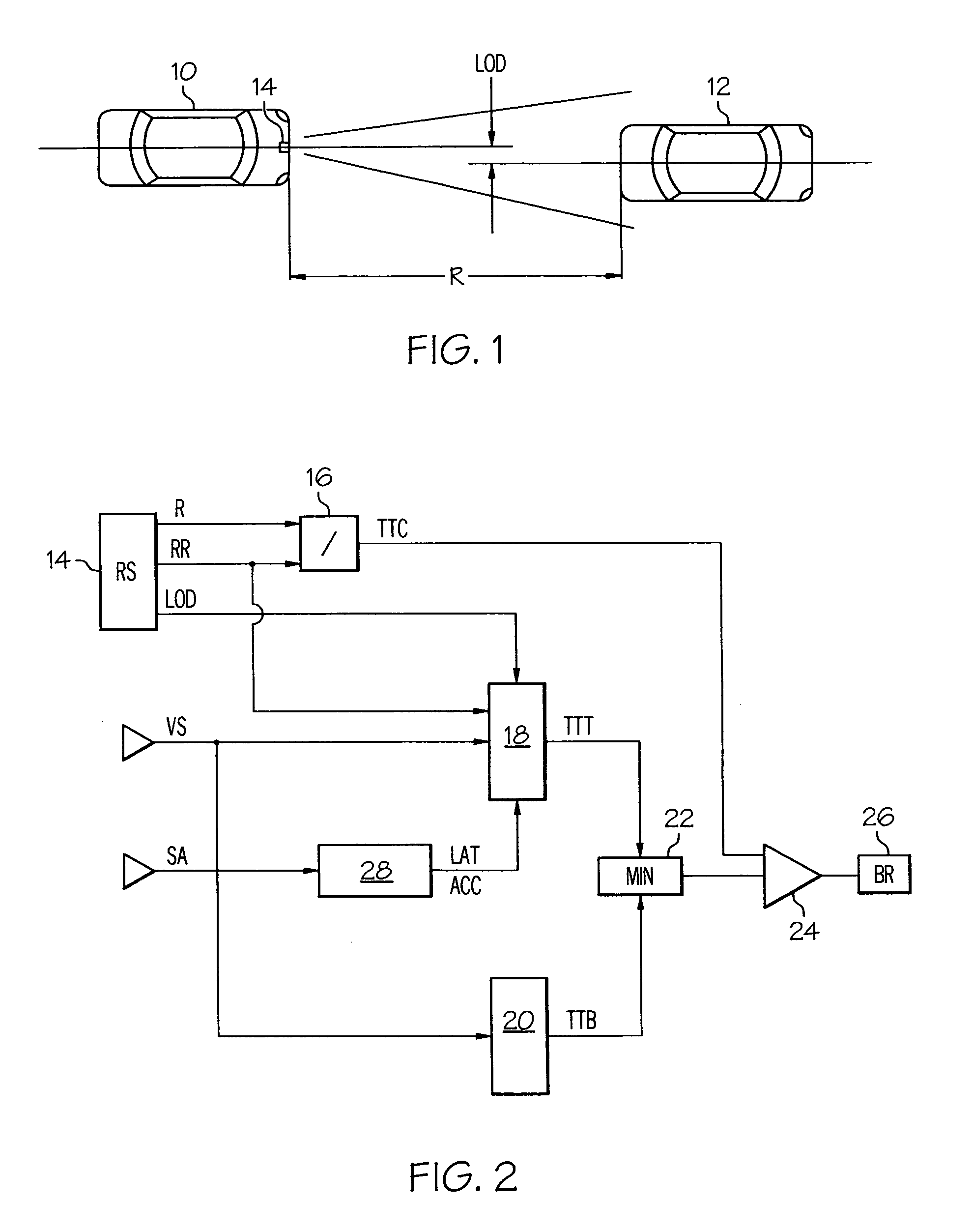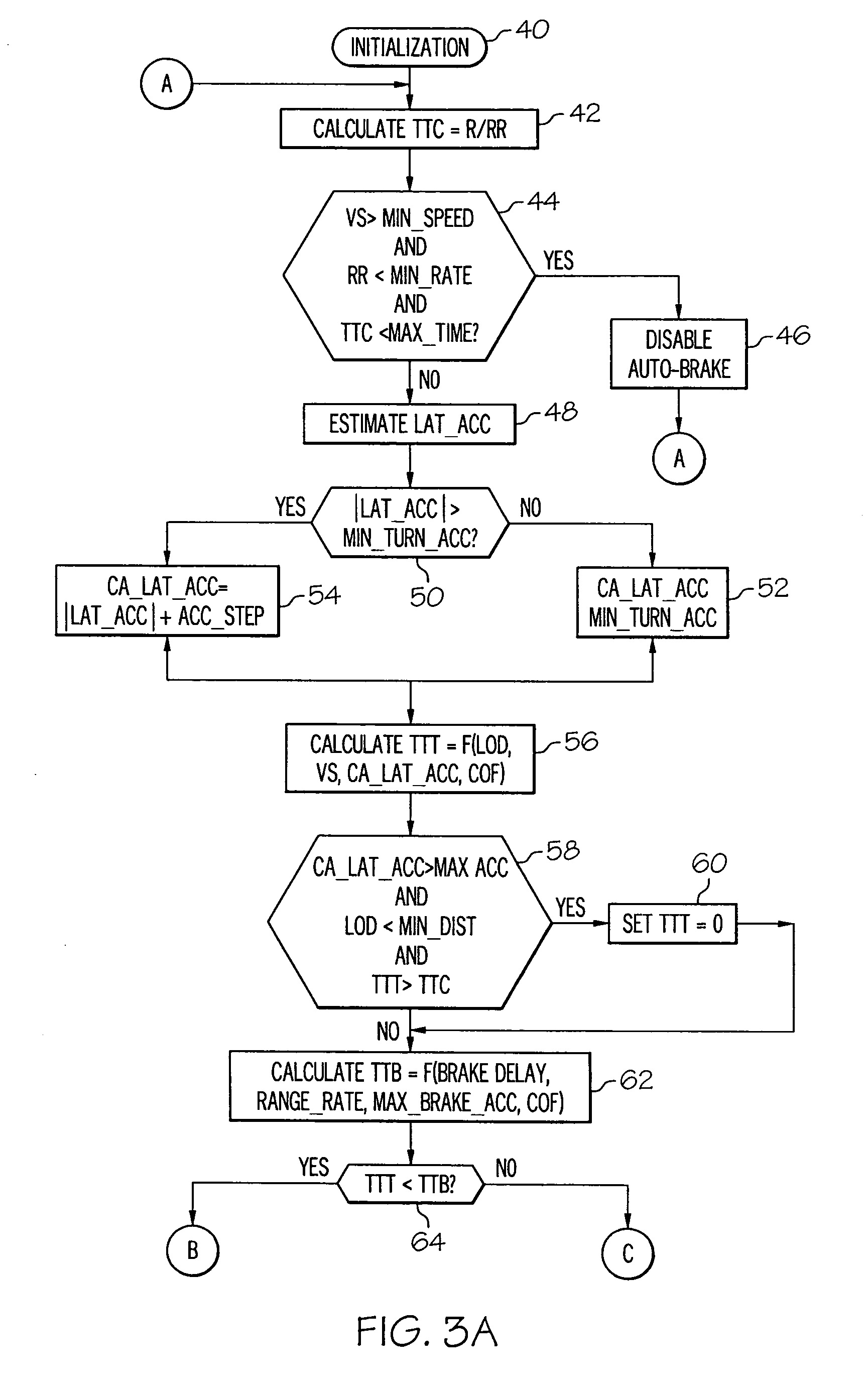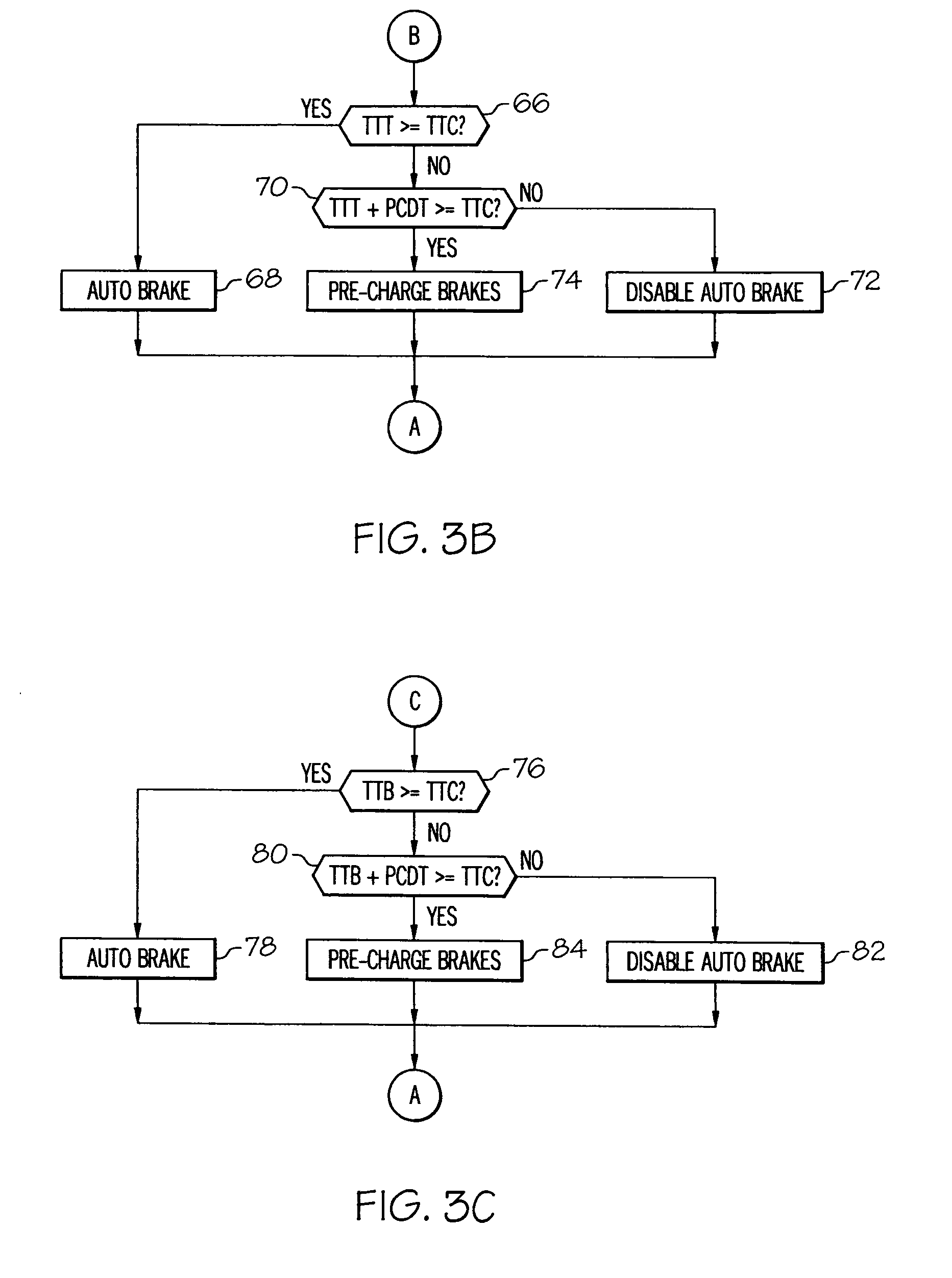Collision prediction and mitigation method for a vehicle
a technology for predicting collisions and vehicles, applied in vessel construction, steering initiations, instruments, etc., can solve problems such as system initiating actions, false alarms, and tendency to overstate the turning and braking capability of vehicles, so as to optimize collision mitigation and optimize collision mitigation
- Summary
- Abstract
- Description
- Claims
- Application Information
AI Technical Summary
Benefits of technology
Problems solved by technology
Method used
Image
Examples
Embodiment Construction
[0008]The diagram of FIG. 1 depicts a host vehicle 10 and a target vehicle or other obstacle in the forward path of the host vehicle 10. The host vehicle 10 is equipped with a system including a radar ranging sensor 14 for carrying out the collision prediction and mitigation method of the present invention. The host vehicle 10 is moving in the direction of the target vehicle 12, which may be moving or stationary. The ranging sensor 14, which may also be used for other vehicular applications such as adaptive cruise control, provides three parameters of interest: range R, range-rate RR, and lateral offset distance LOD. The range and lateral offset distance parameters R and LOD are designated in the illustration of FIG. 1; the range-rate parameter RR is the closing velocity, or the velocity of the host vehicle 10 relative to that of the target vehicle 12. In addition to the ranging sensor 14, the host vehicle 10 is equipped with a vehicle speed sensor and a turning sensor such as a ste...
PUM
 Login to View More
Login to View More Abstract
Description
Claims
Application Information
 Login to View More
Login to View More - R&D
- Intellectual Property
- Life Sciences
- Materials
- Tech Scout
- Unparalleled Data Quality
- Higher Quality Content
- 60% Fewer Hallucinations
Browse by: Latest US Patents, China's latest patents, Technical Efficacy Thesaurus, Application Domain, Technology Topic, Popular Technical Reports.
© 2025 PatSnap. All rights reserved.Legal|Privacy policy|Modern Slavery Act Transparency Statement|Sitemap|About US| Contact US: help@patsnap.com



